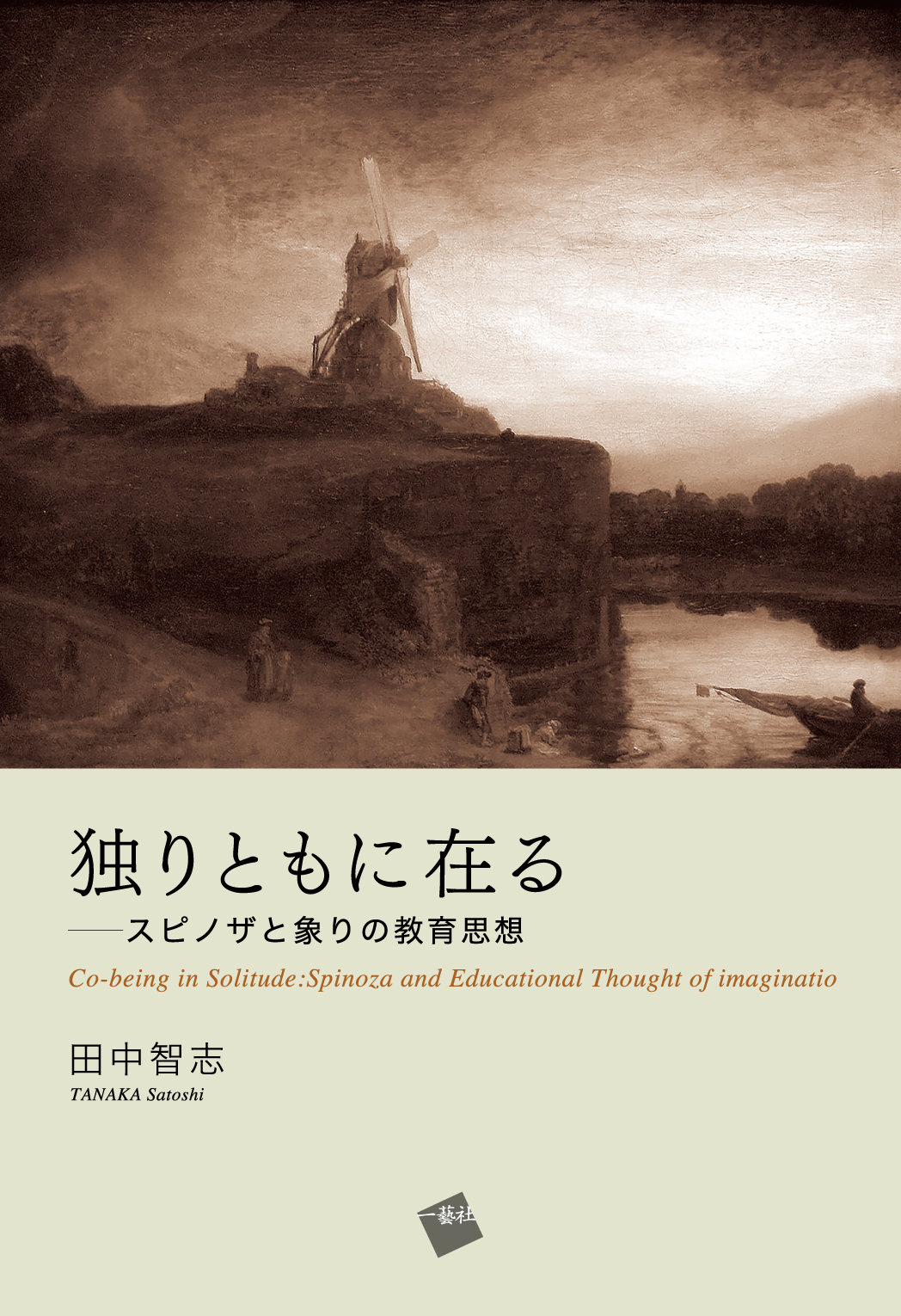
Title
Hitori tomoni aru (“Co-being” in Solitude: Spinoza and the Educational Thought of Imaginatio)
Size
256 pages
Language
Japanese
Released
October 08, 2020
ISBN
978-4-86359-224-7
Published by
Ichigeisha
Book Info
See Book Availability at Library
Japanese Page
Contemporary society is inundated with diverse forms of communication. People are constantly communicating with each other, deftly tapping on their device screens to exchange short and quick spurts of information. Not only is there something suggestive of loneliness in this method of communication, but it also seems to mask the solitude of people’s lives, even as they reach out to each other. Think, for example, how in the silence and stillness of our solitude, we converse, through the writings they have left behind, with persons long deceased and who we have never met.
Before we, as members of an organization, functionally and pragmatically collaborate with other people, before we convince ourselves of, and act upon, such social values as peace, human rights, and public welfare, before all of this, we exist in tandem with others. But for people who are working hard to protect and increase their own interests and the interests of the organizations to which they belong, this coexistence is apparently hard to discern.
No matter how much we talk with others, we remain solitary and alone. Our solitary nature is neither the individuality of psychology, nor the self that is created by desire. Rather it is the figure of a human responding to someone’s call. The semantic world of contemporary society, which so eagerly speaks of profit, evidence, income, and academic achievement, is inclined to deny, or overlook, both our solitary nature and our coexistence within this solitude.
To be with someone is to be in meticulous communion with that person, to be in overwhelming resonance with that person. Yet so long as we live within that context, we are fated to be solitary and alone. The annoying "Come on, everyone together!” that reverberates throughout our various communications, disappears like the morning mist in the morning sun.
With the help of the 17th-century Dutch philosopher Spinoza, this book seeks to discuss the power to live better, not in terms of development and growth, but through the metaphor of a mirror that speaks of transcendence and inception. Within this process, innocence arises as a concept that cannot be deconstructed. This is neither an objective truth nor a subjective imagination, but rather a “mirror” to be found since ancient times deep within the European mindset. This speculum mentis (that is, “mirror of the mind”) appears without form or shape, and is, in other words, the heart and mind of those who strive to live better lives.
No matter how functional or practical the objectives of contemporary education, no matter what economic benefit and technological engineering we seek, we need ways of thinking that go beyond this pursuit of usefulness. One such way of thinking is the “mirror of the mind” that this book attempts to portray. This concept was once to be found in the discourse of Christian thought in ancient Europe but has been forgotten in our modern times with the term appearing only once in Spinoza’s Ethics.
Some may think it is mere nostalgic indulgence to pull this obsolete phrase from the basement of European thought history, but the “mirror of the mind” can still be conjured today so long as people strive to live “better” lives, that is, so long as we try to live as naturally and richly as possible, removed from the painfully repetitive thicket of communication, unbeholden to profit, evidence, or authority.
(Written by TANAKA Satoshi, Professor, Graduate School of Education / 2021)



 Find a book
Find a book



